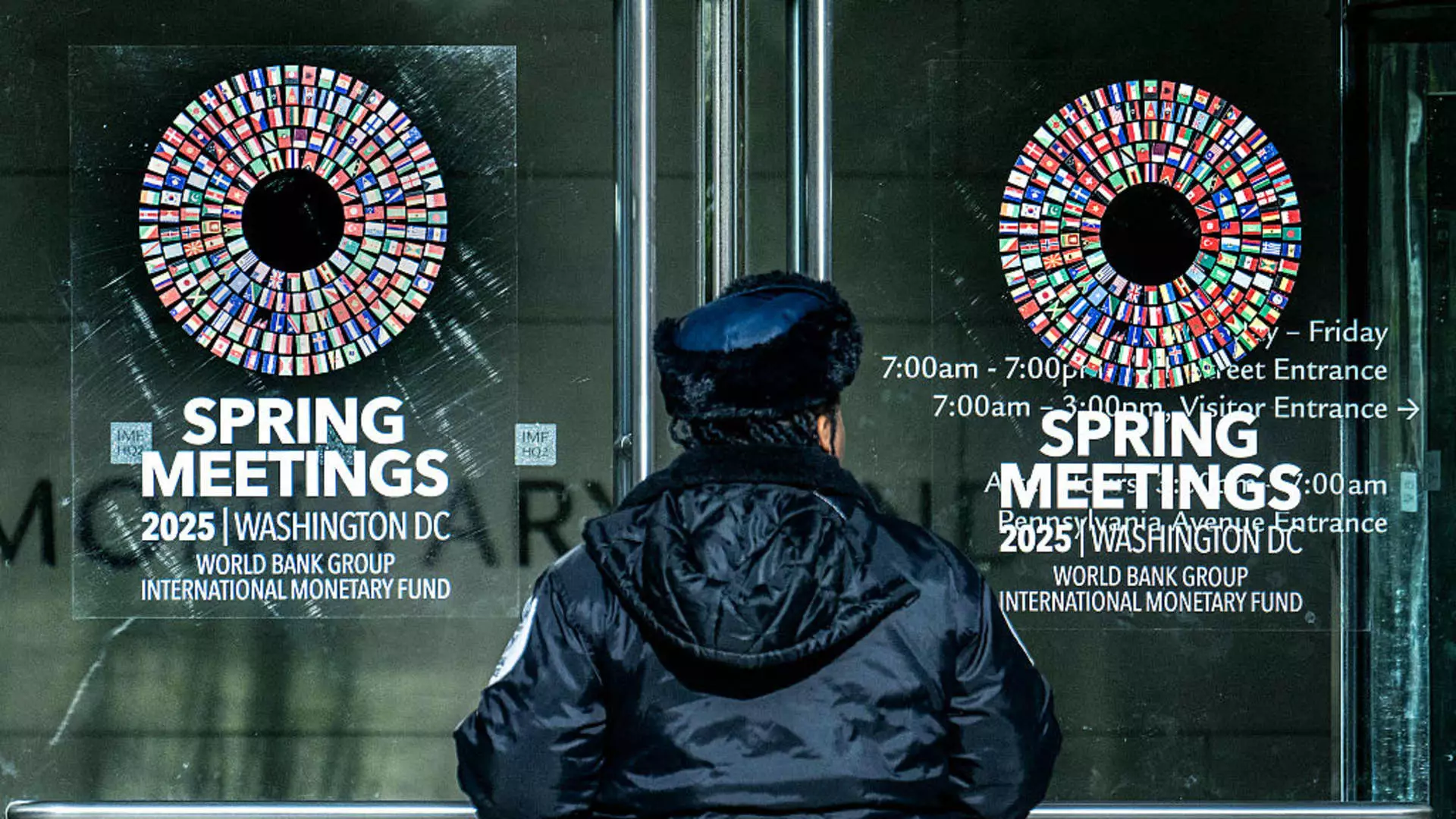In a strikingly somber report released on Tuesday, the International Monetary Fund (IMF) downgraded its growth forecasts for several major Asian economies for 2025, triggering alarm bells across the financial and political arenas. The adjustments are stark: projections for China’s growth dropped to a mere 4%, and India was revised to 6.2%, both falling short of earlier optimism. These figures reveal a landscape marked by trade tensions and unsettling policy ambiguity, highlighting the urgent need for strategic stability within the region.
The situation painted by the IMF sets a grave tone not just for these two economic giants but for Asia as a whole. With China’s official GDP growth target remaining at “around 5%” and India aspiring for a more ambitious 6.5%, these forecast cutbacks signal a growing chasm between government aspirations and the more sobering economic realities. In stark contrast to China’s once-unshakeable economic momentum, this shift underscores the impact of external pressures, forcing a recalibration of expectations that is anything but comforting.
Trade Tensions and Their Global Ramifications
The recent downgrades coincide strikingly with rising tariffs and entrenched trade disputes that have become hallmarks of the current global economic climate. The IMF attributed much of the downturn to the “major negative shock” resulting from tariff impositions by the United States and its allies. Such trade wars do not merely feign impact; they reverberate with tangible harshness felt in factories and markets, where uncertainty breeds hesitation and stifles innovation.
Moreover, the IMF explained how the chaotic and often unpredictable nature of these tariffs complicates economic forecasting. The unpredictability surrounding trade measures leads to an economic stasis; businesses are rendered tentative, wary of future shifts that could undercut their investments. The projecting environment feels increasingly dystopian as the layers of complexity pile upon one another, stymying growth at every turn.
As Goldman Sachs and Natixis join in the chorus of economic revisionism, their forecasts suggest a broader trend of skepticism that winds its way through Asia, like the persistent fog that refuses to lift. Increasingly, analysts and firms acknowledge the potency of external factors like the U.S.-China trade war in shaping regional economic fortunes, and what looms on the horizon is anything but bright.
A Critique of Diplomatic Responses
The stark revisions raise questions about the diplomatic responses taken by regional players. While Japan and India have adopted a more diplomatic approach toward the United States, appealing for talks and negotiations amidst the tumult, their leniency raises eyebrows. Japan’s attempts to engage diplomatically following the announcement of tariffs, described by its negotiator Ryosei Akazawa as “extremely regrettable,” illustrates a commendable yet potentially futile effort to combat the mercurial whims of a unilateral U.S. administration.
India’s Prime Minister Narendra Modi has been proactive, meeting with U.S. leaders to underpin a mutually beneficial relationship. Yet, in this fast-evolving economic landscape, can such diplomatic overtures bear any fruit when faced with the capriciousness of policy? The feeling of urgency among these leaders is palpable; however, will their efforts amount to substantial change, or are they just band-aids on a festering wound?
The trade tensions elucidate a broader issue of leadership—one that requires not just economic maneuvering but an acknowledgment of the interconnectedness and fragility of modern economies. As various players vie for control and influence, fostering a collaborative approach could serve not only their individual interests but the greater good of regional and global stability.
Beyond Economics: The Ideological Disconnect
The implications of these economic forecasts transcend mere numbers; they unearth deeper ideological ramifications poised to reshape the political landscape as well. Whether due to unilateral tariffs or regional rivalries, the ideological disconnect breeds a sense of disenchantment among everyday citizens who suffer the consequences of policy divergences. The call for economic liberalism, characterized by open borders and free trade, stands threatened, replaced by a grim landscape of isolationism and protectionism.
For those who advocate for center-wing liberalism, the landscape appears bleak. The downgrading of growth forecasts isn’t simply a matter of economic terms; it’s a harbinger of political unrest that could upend the intricate webs of trade and diplomacy crafted over decades. This uncertainty could spark reactions that bounce between populism and radicalism in response to economic stagnation, bearing serious ideological consequences that demand attention beyond mere financial metrics.
As the ramifications of these forecasts ripple through society, one cannot help but wonder: can we find our way back to a road paved with liberal economic ideals? The challenges ahead are daunting, but without a unified approach steeped in cooperation and active engagement, the interval of economic decline may well unfold into an extended period of discontent across Asia.



Leave a Reply